Kumamoto Japan  Autumn
TRAVEL LOG vol.1
Autumn
TRAVEL LOG vol.1

Logged by Garth “Kakeru” Crouch
A travel writer and translator who explores “off the beaten path” Japan.
Kumamoto Saké
OVERVIEW
Kumamoto has a very interesting history in regards to saké - from ashy saké to saké bans. In order to really get to know the saké of this region, you first need to know a little about the history of saké in Kumamoto.
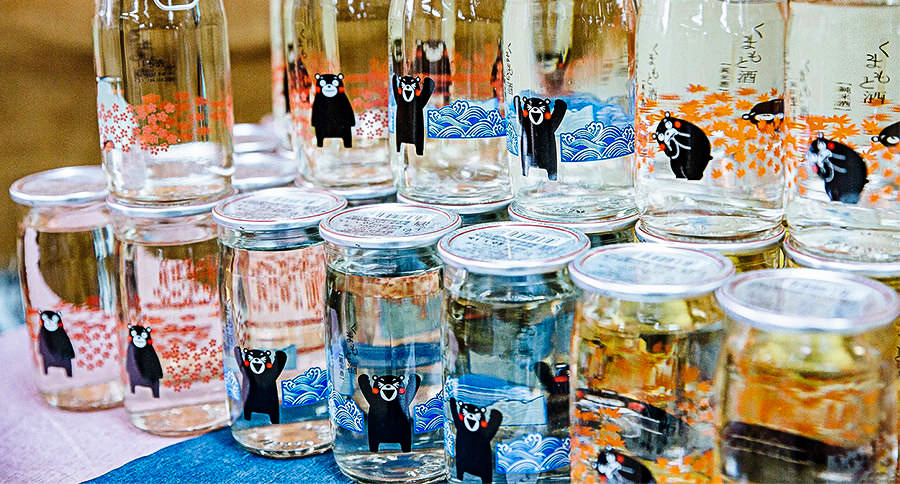
HISTORY
The saké that we all know today wasn’t traditionally available in Kumamoto Prefecture for an extended period of time during the region’s history. As Kumamoto is located on Kyushu, the southernmost of Japan’s four main islands, it has a warmer climate than many of the country’s other regions. This meant that traditional saké brewing processes weren’t suitable in the Kumamoto climate, and saké would often spoil.
To prevent this, wood ash was added to the brewing process making it more alkaline. The added ash produced a reddish tinge to the saké which came to be called akazake. While saké that was made without ash was seen as superior, akazake was the saké of the people.

To prevent good saké from going to waste, the ruling lords of the time outlawed the brewing or importation of any other type of saké in the Kumamoto region, and this continued for a few hundred years.
In the late 1800s, saké brewing techniques began to improve and the need to add ash to prevent spoilage was no longer a necessity. Even with these advancements, most breweries in Kumamoto still produced akazake until the early 1900s. Then, in WWII, the production of akazake was actually banned. For a time, it became completely unavailable."/kumamoto-japan/img"/kumamoto-japan/img"/kumamoto-japan/img"/kumamoto-japan/img"/kumamoto-japan/img"/kumamoto-japan/img"/kumamoto-japan/img"/kumamoto-japan/img"/kumamoto-japan/img"/kumamoto-japan/img"/kumamoto-japan/img"/kumamoto-japan/img"/kumamoto-japan/img"/kumamoto-japan/img"/kumamoto-japan/img"/kumamoto-japan/img"/kumamoto-japan/img"/kumamoto-japan/img"/kumamoto-japan/img"/kumamoto-japan/img"/kumamoto-japan/img"/kumamoto-japan/img"/kumamoto-japan/img"/kumamoto-japan/img"/kumamoto-japan/img"/kumamoto-japan/img"/kumamoto-japan/img"/kumamoto-japan/img"/kumamoto-japan/img"/kumamoto-japan/img"/kumamoto-japan/img"/kumamoto-japan/img"/kumamoto-japan/img"/kumamoto-japan/img"/kumamoto-japan/img"/kumamoto-japan/img"/kumamoto-japan/img"/kumamoto-japan/img"/kumamoto-japan/img"/kumamoto-japan/img"/kumamoto-japan/img"/kumamoto-japan/img"/kumamoto-japan/img"/kumamoto-japan/img"/kumamoto-japan/img"/kumamoto-japan/img"/kumamoto-japan/img"/kumamoto-japan/img"/kumamoto-japan/img"/kumamoto-japan/img"/kumamoto-japan/img"/kumamoto-japan/img"/kumamoto-japan/img"/kumamoto-japan/img"/kumamoto-japan/img"/kumamoto-japan/img"/kumamoto-japan/img"/kumamoto-japan/img"/kumamoto-japan/img"/kumamoto-japan/img"/kumamoto-japan/img"/kumamoto-japan/spring"/kumamoto-japan/img"/kumamoto-japan/img"/kumamoto-japan/img"/kumamoto-japan/spring"/kumamoto-japan/img"/kumamoto-japan/img"/kumamoto-japan/img"/kumamoto-japan/img"/kumamoto-japan/img"/kumamoto-japan/spring"/kumamoto-japan/img"/kumamoto-japan/img"/kumamoto-japan/img"/kumamoto-japan/img"/kumamoto-japan/img"/kumamoto-japan/summer"/kumamoto-japan/img"/kumamoto-japan/img"/kumamoto-japan/img"/kumamoto-japan/summer"/kumamoto-japan/img"/kumamoto-japan/img"/kumamoto-japan/img"/kumamoto-japan/img"/kumamoto-japan/img"/kumamoto-japan/summer"/kumamoto-japan/img"/kumamoto-japan/img"/kumamoto-japan/img"/kumamoto-japan/img"/kumamoto-japan/img"/kumamoto-japan/autumn"/kumamoto-japan/img"/kumamoto-japan/img"/kumamoto-japan/img"/kumamoto-japan/autumn"/kumamoto-japan/img"/kumamoto-japan/img"/kumamoto-japan/img"/kumamoto-japan/img"/kumamoto-japan/img"/kumamoto-japan/autumn"/kumamoto-japan/img"/kumamoto-japan/img"/kumamoto-japan/img"/kumamoto-japan/img"/kumamoto-japan/img"/kumamoto-japan/winter"/kumamoto-japan/img"/kumamoto-japan/img"/kumamoto-japan/img"/kumamoto-japan/winter"/kumamoto-japan/img"/kumamoto-japan/img"/kumamoto-japan/img"/kumamoto-japan/img"/kumamoto-japan/img"/kumamoto-japan/winter"/kumamoto-japan/img"/kumamoto-japan/img"/kumamoto-japan/img"/kumamoto-japan/img"/kumamoto-japan/img"/kumamoto-japan/autumn"/kumamoto-japan/cn"/kumamoto-japan/tw"/kumamoto-japan/kr"/kumamoto-japan/jp"/kumamoto-japan/_nuxt"/kumamoto-japan/_nuxt"/kumamoto-japan/_nuxt"/kumamoto-japan/_nuxt"/kumamoto-japan/_nuxt"/kumamoto-japan/_nuxt"/kumamoto-japan/_nuxt
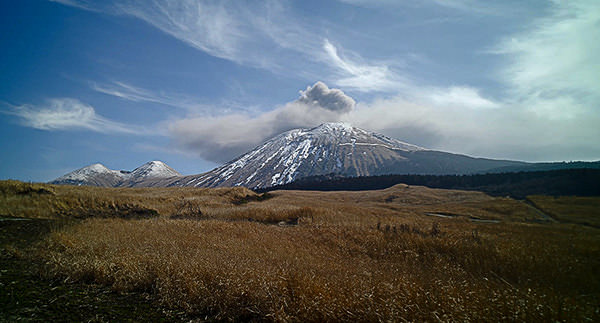
TODAY
Akazake, being an important part of Kumamoto’s history was revived, and can still be found today! You can buy both akazake for drinking and cooking akazake.
Thanks to Mt Aso, the soil in Kumamoto is rich and fertile, perfect for growing top quality rice. Kumamoto has even created a new variant of saké rice that is hardier in tough weather conditions and versatile in the brewing of different types of sakés.
The volcano and surrounding mountains also gift the prefecture with an abundance of pure water, filtered down through underground water tables, and clear rivers.

After the ban on clear saké had been lifted, many of the saké breweries of Kumamoto joined forces to learn and share all the best brewing techniques with one another (while of course holding true to each of their own unique brewing methods). A special yeast was also produced in Kumamoto, which helped to revolutionise the way saké was viewed right across the country.
Saké produced at each brewery of course has its own unique characteristics, but flavour profiles also differ by region. Saké brewed in Kumamoto is said to have a robust flavour profile that suits the stronger, richer flavours found in the local cuisine. However, I think you can find a huge variety of sakés with varying flavour profiles in Kumamoto.
Here are two of the breweries I visited on my trip through Kumamoto.
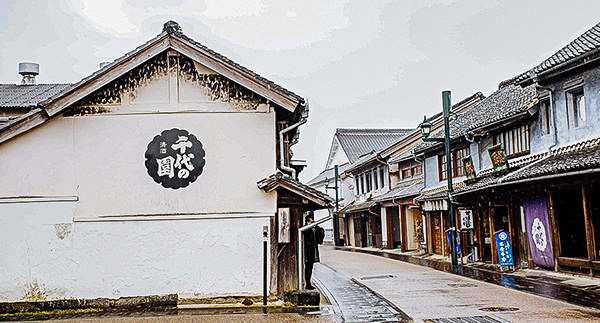
Chiyonosono saké brewery
There are quite a number of well-known saké breweries in Kumamoto, and Chiyonosono, set in the picturesque little town of Yamaga, is one of them. Originally a rice wholesaler, Chiyonosono became a saké brewery in 1896 (although the name Chiyonosono came later). Due to this, the brewery is very selective about the rice used in their saké, even cultivating their own variety of saké rice!

The buildings have certainly retained their classic Japanese charm, but the saké is anything but outdated! Chiyonosono is not afraid to experiment and create new sakes.

Chiyonosono has a fantastic range of saké, including a daiginjo saké that can be aged like a wine, and even Kumamoto’s traditional akazake can be purchased here!
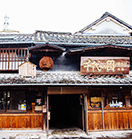
Chiyonosono saké brewery --- Yamaga City
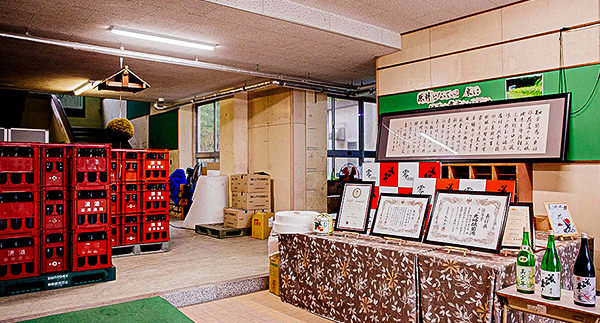
Bishonen
Though the brewery’s origins go way back to the early 1700s, the current Bishonen brewery was founded in 2013. The interesting thing about this brewery in Kikuchi, is that it’s located inside a repurposed elementary school building. The rice and water is all locally sourced straight from Kikuchi, along the saké brewed with local pride.

The saké brewed at Bishonen are fruity and are made to be enjoyed by everyone, not just the connoisseurs. Their saké has won awards both in Japan and in overseas saké competitions, so they must be doing something right!
There are many saké breweries throughout Kumamoto, so be sure to check which saké breweries you can fit into your itinerary.
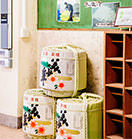
Bishonen --- Kikuchi City
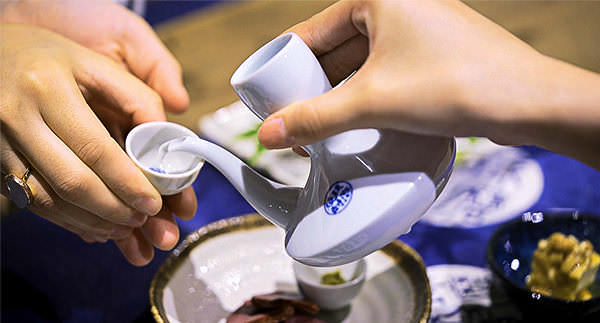
Kuma Shochu
The prefectures of Kyushu are in general much more famous for shochu than for saké! Shochu is not as well known overseas as saké, but it is very well-known throughout Japan. So what is shochu?
Shochu is a distilled hard liquor, usually made using either sweet potato, rice, or barley, but can be made using other ingredients like potatoes, buckwheat, etc. It usually has a higher alcohol content than saké, and is enjoyed on the rocks, in cold or hot water, or even used in cocktails.
The town of Hitoyoshi in the deep south of Kumamoto is famous for producing a high quality shochu called Kuma Shochu. Only shochu produced in Hitoyoshi can bear the name Kuma Shochu.

Top quality shochu is single-distilled, so you can still taste notes from the base ingredients. While some areas in Kyushu are famous for using certain base ingredients, distilleries in Kumamoto use a range of these ingredients, and sometimes even a blend. However, as Hitoyoshi is a rice-growing region, Kuma Shochu is generally made with rice as its main ingredient.

Don’t let that fool you into thinking that all rice shochu tastes the same! There are quite a number of shochu distilleries in Hitoyoshi, so you could definitely make a day of touring around all the local distilleries and do some shochu tasting!
